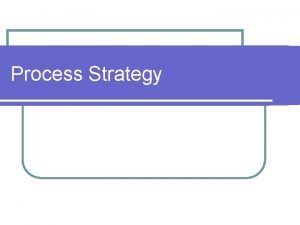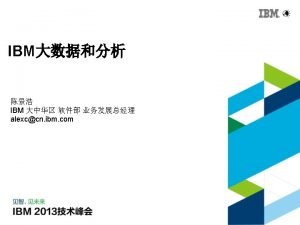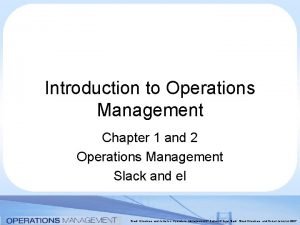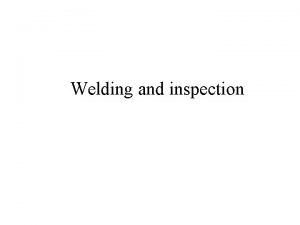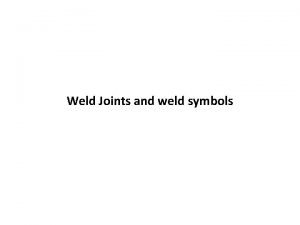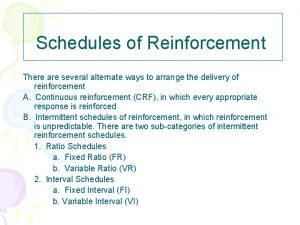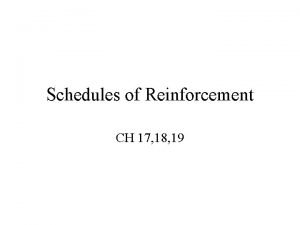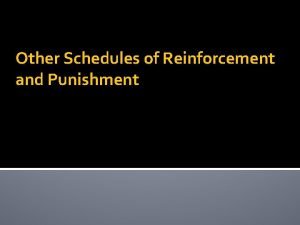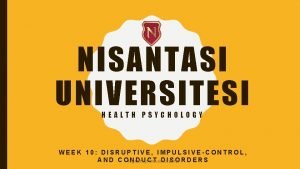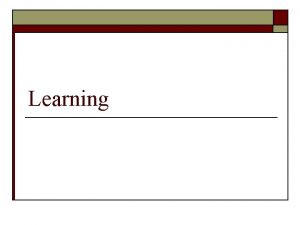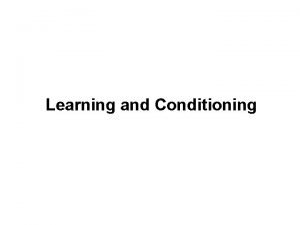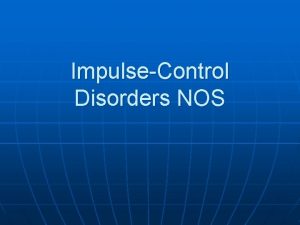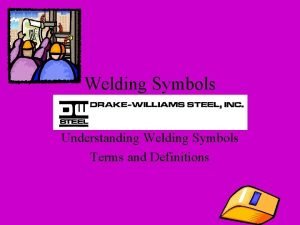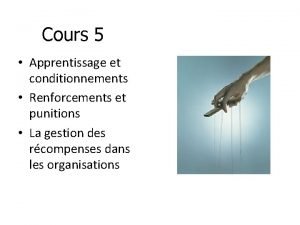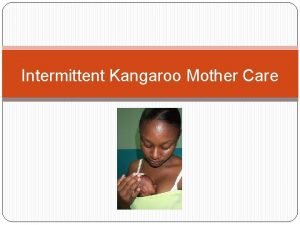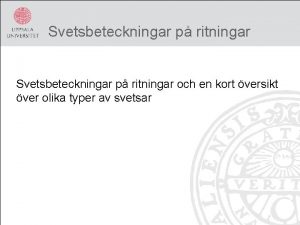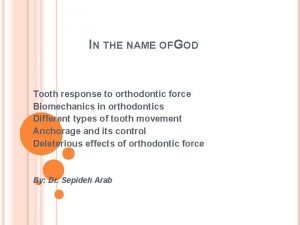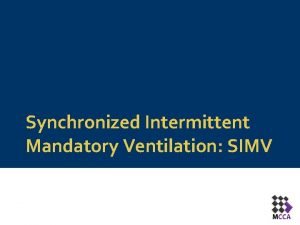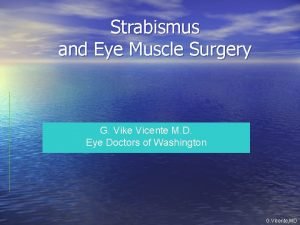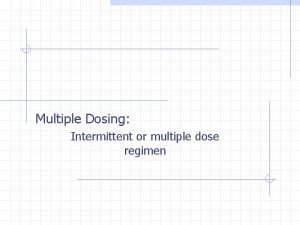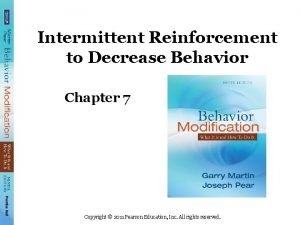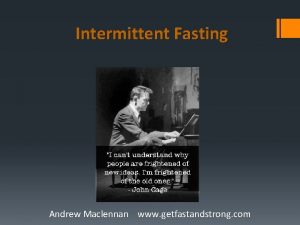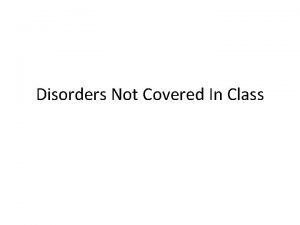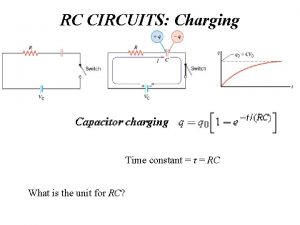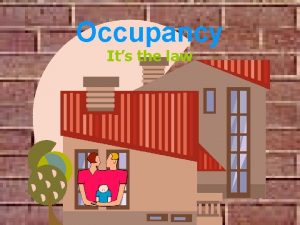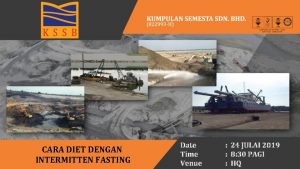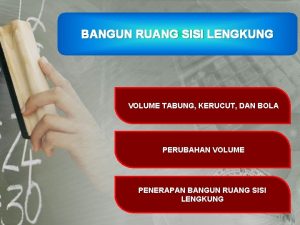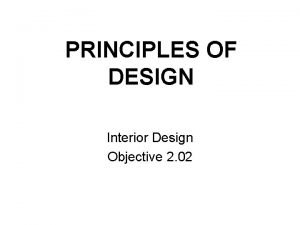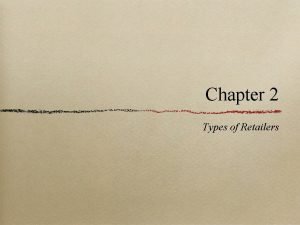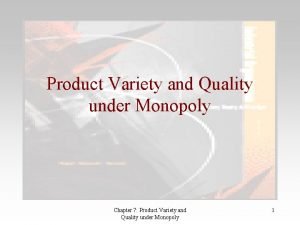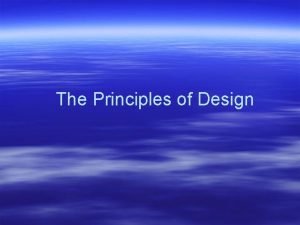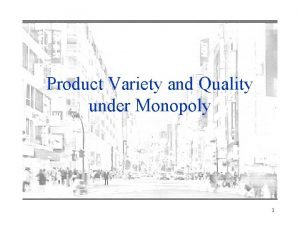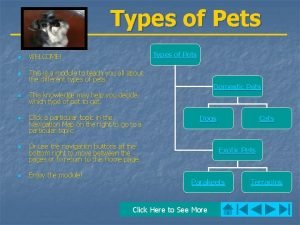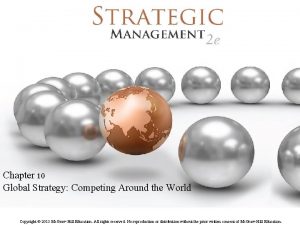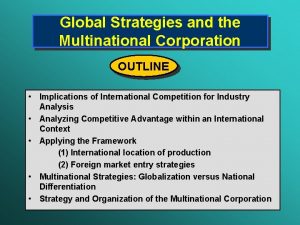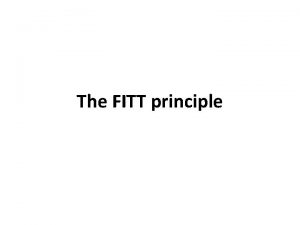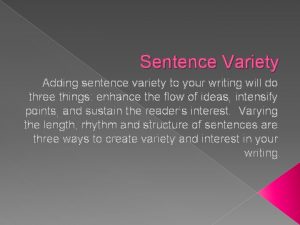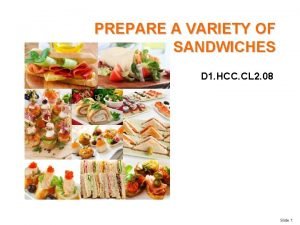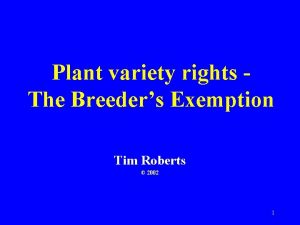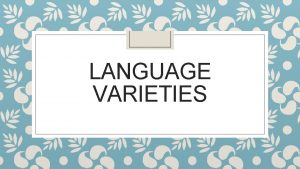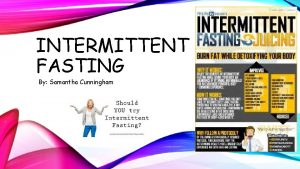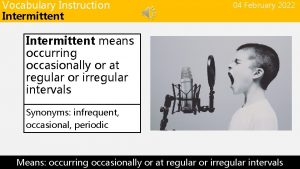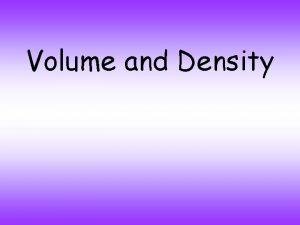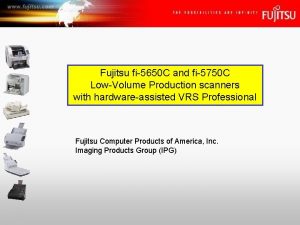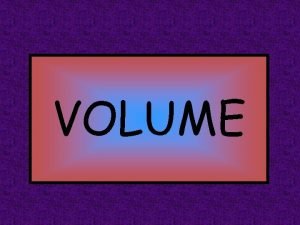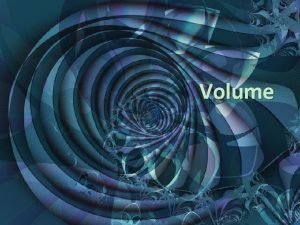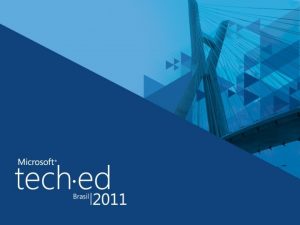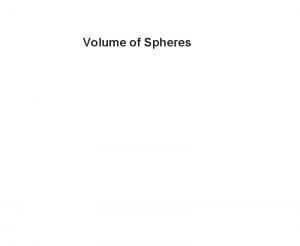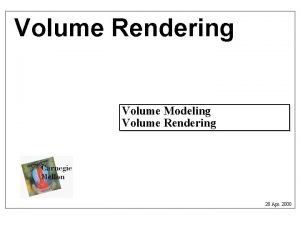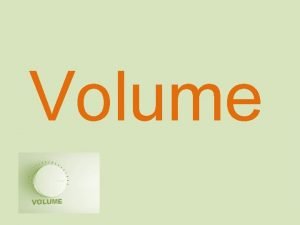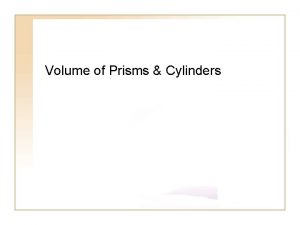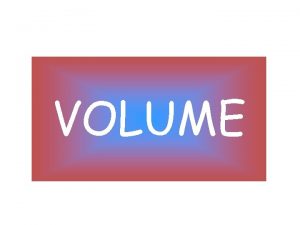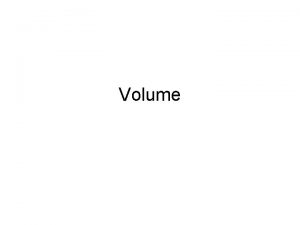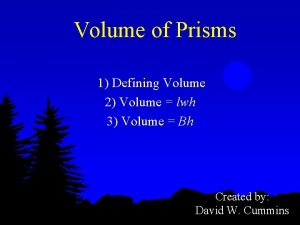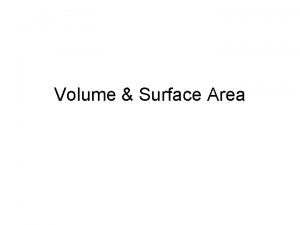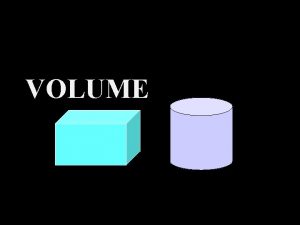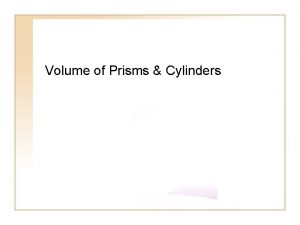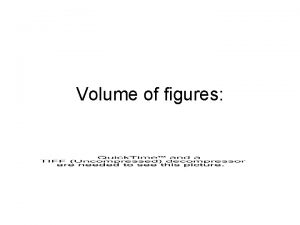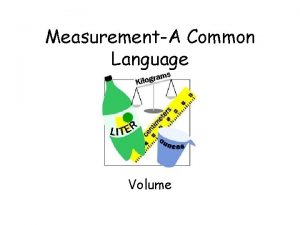Process Strategy Process Volume and Variety LowVolume Intermittent

































































- Slides: 65

Process Strategy

Process, Volume, and Variety Low-Volume (Intermittent) Repetitive Process (Modular) High-Volume (Continuous) Process focus Mass High Variety projects, job Customizatio One or few units n shops, (machine, per run, high print, carpentry) variety (difficult to Standard (allows in modules achieve, but Changes Repetitive customization) huge Register Modest runs, rewards) (autos, motorcycles) standardized modules Harley Davidson Dell Changes in Poor Product focus Computer attributes (such as strategy (commercial baked grade, quality, goods, steel, size, thickness, glass) etc. ) Nucor Steel Long runs only

Process Strategies l Involve determining how to produce a product or provide a service l Objectives: Meet or exceed customer requirements l Meet cost & managerial goals l l Has long-run effects Product & volume flexibility l Costs & quality l

Types of Process Strategies Process strategies that follow a continuum l Within a given facility, several strategies may be used l These strategies are often classified as: l Process. Focused Repetitive. Focused Continuum Product-Focused

Process Focused Strategy l Facilities are organized by process l Similar processes are together l Focus is on the work, tools, etc. l Low volume, high variety products Product A l ‘Jumbled’ flow Operatio n l Other names 1 2 l Intermittent process l Job shop Product B 3

Process Focus

Process Focus Pros & Cons l Advantages Greater product flexibility l More general purpose equipment l Lower initial capital investment l l Disadvantages High variable costs l More highly trained personnel l More difficult production planning & control l Low equipment utilization (5% to 25%) l

Repetitive Focused Strategy l Facilities often organized by assembly lines l Characterized by modules l Parts & assemblies made previously l Modules combined for many output options l Other names l l Assembly line Production line

Repetitive Focus

Repetitive Focus Considerations l More structured than process-focused, less structured than product focused l Enables quasi-customization l Using modules, it enjoys economic advantage of continuous process, and custom advantage of low-volume, highvariety model

Flow Diagram for Harley Davidson

Product Focused Strategy l Facilities are organized by product l High volume, low variety products l Where found l l Discrete unit manufacturing Continuous process manufacturing Products A & B l Other names l Line flow production l Continuous production 1 2 Operation 3

Product Focus

Product Focus Pros & Cons l Advantages Lower variable cost per unit l Lower but more specialized labor skills l Easier production planning and control l Higher equipment utilization (70% to 90%) l l Disadvantages Lower product flexibility l More specialized equipment l Usually higher capital investment l

Flow Diagram for NUCOR

A Comparison (1) Process Focus (Low volume, High variety) Repetitive Focus (Modular) Product focus (High-volume, low-variety) Mass Customization (High-volume, high-variety 1. Small quantity, large variety of products Long runs, standardized product, from modules Large quantity, small variety of products Large quantity, large variety of products 2. General purpose equipment Special equipment aids in use of assembly line Special purpose equipment Rapid changeover on flexible equipment

A Comparison (2) Process Focus Repetitive Focus Product focus Mass Customization 3 Broadly skilled operators Modestly trained employees Operators less broadly skilled Flexible operators trained for customization 4 Many instructions because of change in jobs Reduced training Few work and number of orders and job instructions Custom orders require many instructions 5 Raw material high relative to product value JIT techniques used Raw material low relative to product value

A Comparison (3) Process Focus Repetitive Focus Product focus Mass Customization 6 WIP high relative to output JIT techniques used WIP low relative WIP driven to output down by JIT, kanban, lean production 7 Units move slowly thru plant Movement measured in hours & days Units move swiftly thru facility Goods move swiftly thru facility 8 Finished goods made to order, not stored Finished goods made to frequent forecasts Finished goods made to forecast, then stored Finished goods made to order

A Comparison (4) Process Focus Repetitive Focus Product focus Mass Customization 9 Scheduling complex and concerned with trade-off between inventory, capacity, and customer service Scheduling based on building models from a variety of forecasts Scheduling relatively simple, concerns establishing sufficient rate of output to meet forecasts Scheduling sophisticated to accommodate customization 10 Fixed costs low, variable costs high Fixed costs dependent on flexibility of facilities Fixed costs high, variable costs low Fixed costs high; variable costs must be low

A Comparison (5) Process Focus Repetitive Focus 11 Costing, done Costs usually by job, is known based on estimated prior to experience doing job but only known after doing job Product focus Mass Customization Because of high fixed costs, cost dependent on utilization of capacity High fixed costs and dynamic variable costs

Volume and Variety of Products Low Volume High Repetitive Variety Process (Intermittent) (Modular) High Volume Low Variety Process (Continuous) One or very few Projects Mass units per lot Very small runs, high Job Shops Customizatio variety n Modest runs, modest Disconnected variety Repetitive Long runs, modest Poor Strategy Connected variations Repetitive (High variable Very long runs, Continuous costs) changes in attributes Equipment utilization 5%-25% 20%-75% 70%-80%

Mass Customization l Using technology and imagination to rapidly mass-produce products that cater to sundry unique customer desires. l Under mass customization the three process models become so flexible that distinctions between them blur, making variety and volume issues less significant.

Mass Customization: More Choices Item Vehicle models Vehicle styles Bicycle types Software titles Web sites Movie releases New book titles Houston TV channels Breakfast cereals Item SKUs in supermarkets Number of Early Choices Early 21 st 1970 s 140 Century 260 18 1, 212 8 19 0 300, 000 0 30, 727, 296 267 458 40, 530 77, 446 5 185 160 340 14, 000 150, 000

Process Strategies Repetitive Focus Modular design Flexible equipment Modular techniques Mass Customization Effective scheduling techniques Process-focused High variety, low volume Low utilization 20%) (5% General purpose equipment Rapid throughput techniques Product-focused Low variety, high volume High utilization 80%) (70% Specialized equipment

Process Analysis and Design l Is the process designed to achieve competitive advantage in terms of differentiation, response, or low cost? l Does the process eliminate steps that do not add value? l Does the process maximize customer value as perceived by the customer? l Will the process win orders?

Crossover Charts Fixed cost $ 400, 00 0 300, 00 0 200, 00 0 ce ss $ To co tal st pr s o Process A A $ Variable cost V 1 l pr a t To ts cos ss e c o V 2 $ B Process B ss C e c o l pr Tota costs Fixed cost Volume Process B Fixed cost Process A Process C Fixed cost Process C

Crossover Chart Example #1 Process Fixed Cost Variable Cost per Unit A $10, 000 $5 B 15, 000 3 C 20, 000 2

Example #1 Solved

Example #1 Chart

Crossover Chart Example #2 Process Fixed Cost Variable Cost per Unit A $10, 000 $8 B 30, 000 3 C 40, 000 2

Example #2 Solved

Example #2 Chart

Crossover Chart Example #3 Process Fixed Cost Variable Cost per Unit A $10, 000 $8 B 30, 000 6 C 40, 000 2

Example #3 Solved

Example #3 Chart

Tools for Process Design l Flow Diagrams l Process Charts l Time-Function/Process Mapping l Work Flow Analysis

Process Flow Diagram Accounti ng Purchasing (order inks, paper, other supplies) Vendo rs Receivi ng Warehousing (ink, paper, etc. ) Custom er Customer sales representativ e take order Prepress Department (Prepare printing plates and negatives) Printing Department Collating Departm ent Information flow Material flow Gluing, binding, stapling, labeling Polywrap Departm ent Shippi ng

Process Chart Example SUBJECT: Request tool purchase Dist (ft) Time (min) Symbol Description lðo D Ñ Write order DÑ On desk ¡ èo D Ñ To buyer ¡ð n D Ñ Examine ¡ð o 75 ¡= Operation; ð= Transport; o = Inspect; D = Delay; Ñ = Storage

Time Function Map (Baseline) Receiv e produc t Transport Extrud e Wait Product Wait WIP Plant B Wait WIP Warehouse Product Print WIP Plant A Product Wait Order Productio n control Order Customer Produc t Proces Sales s Order Move 12 days 13 days 1 day 4 days 52 days 1 day Move 10 days 1 day 9 days 1 day

Time Function Map (Target) Receiv e produc t Print WIP Extrud e Warehouse Wait Transport Product Plant Product Wait Order Productio n control Order Customer Order Produc t Proces Sales s Order Move 1 day 2 days 1 day 6 days

Work Flow Analysis - 4 Phases Request from a customer or an offer to provide services by a performer l Negotiation, allowing the customer and the performer to agree on how the work should be done and what will constitute customer satisfaction l Performance of the assignment and completion l Acceptance, closing the transaction provided the customer expresses satisfaction and agrees that the conditions were met. l

Attaining Lean Production Focus on inventory reduction l Build systems that help employees l Reduce space requirements l Develop close relationships with suppliers l Educate suppliers l Eliminate all but value-added activities l Develop the workforce l Make jobs more challenging l Set sights on perfection! l

Customer Interaction and Process Strategy Low High Professional Service Personal banking Commercial Banking Full-service stockbroker Boutiques Retailing Service Factory Limited service stockbroker Law clinics Service Shop For-profit hospitals Fine dining restaurants Airlines Degree of Interaction and Customization Hospitals Low Fast food restaurants Warehouse and catalog stores No frills airlines General purpose law firms High Degree of Labor Intensity Mass Service

Improving Service Productivity Strategy Technique l Separation l Self-service l Postponement Structure service so customers must go where service is offered l Self-service l Customizing at delivery l Focus l l Restricting the offerings

Improving Service Productivity Strategy l Modules l Automation l Scheduling l Training Technique Modular selection of service. Modular production l Separating services that lend themselves to automation l l Precise personnel scheduling Clarifying the service options l Explaining problems l Improving employee flexibility l

Production Process & Technology Alternatives # Different Products or Parts High General Purpose, NC, CNC Flexible Manufacturing System Low CIM Dedicated Automation High Volume of Products or Parts

Areas of Technology Machine technology l Automatic identification systems (AIS) l Process control l Vision system l Robot l Automated storage and retrieval systems (ASRS) l Flexible manufacturing systems (FMS) l Computer-integrated manufacturing (CIM) l

Machine Technology l Increased precision l Increased productivity l Increased flexibility l Decreased pollution l Decreased size l Decreased power requirements

Automatic Identification Systems l Improved data acquisition l Increased scope of process automation

Process Control l Use of IT to monitor physical processes l Increased process stability l Increased process precision l Real-time provision of information for process evaluation l Multi-mode information presentation

Vision Systems l Particular aid to inspection l Consistently accurate l Never bored l Modest cost l Superior to individuals performing the same tasks

Robots l Perform monotonous, or dangerous tasks, or those requiring significant strength or endurance l Enhanced consistency, accuracy, speed strength, power when substituted for human effort

Types of Robots

Automated Storage & Retrieval Systems (ASRS) l Automated placement and withdrawal of parts and products l Particularly useful in inventory and test areas of manufacturing firms

Automated Guided Vehicle l Electronically controlled movement of products and/or individuals

Flexible Manufacturing Systems l Electronic control of server DNC machines and robots or AGVs: Computer controls both the workstation and the material handling equipment l Computer control enhances flexibility l Can economically produce low volume at high quality l Stringent communication requirement between components within it

Flexible Manufacturing Systems l Advantages Faster, lower cost changes from one part to another l Lower direct labor costs l Reduced inventory l Consistent (and hopefully better) quality l

Flexible Manufacturing Systems l Disadvantages Limited ability to adapt to product or product mix changes l Requires substantial preplanning and capital expenditures l Technological problems of exact component positioning and precise timing l

Computer Integrated Manufacturing l Extension of flexible manufacturing systems l l l Backwards to engineering and inventory control Forward into warehousing and shipping Can also include financial and customer service areas Reducing the distinction between lowvolume/high-variety, and high-volume/lowvariety production l Heavy reliance on information technology l

Computer Integrated Manufacturing

Technology in Services Service Example Financial services Debit cards, electronic funds transfer, ATMs, Internet stock trading Education Utilities and government Restaurants and foods Electronic bulletin boards, on-line journals Automated one-man garbage trucks, optical mail sorters, scanners, flood warning systems Wireless orders from waiters to kitchen, robot butchering, transponders on cars to track drive-thrus Communication Electronic publishing, interactive TV Hotels Electronic check-in/check-out, electronic key/lock systems

Technology in Services (cont. ) Service Example Wholesale/retail trade Point-of-sale terminals, e-commerce, electronic communication between store and supplier, bar coded data Transportation Automatic toll booths, satellite-directed navigation systems, route planning, progress monitoring Health care On-line patient monitoring, on-line medical information systems, robotic surgery, expert system diagnosis assistance Airlines Ticketless travel, scheduling, Internet ticket sales, improved navigation and route planning

Process Reengineering The fundamental rethinking and radical redesign of business processes to bring about dramatic improvements in performance l Relies on reevaluating the purpose of the process and questioning both the purpose and the underlying assumptions l Requires reexamination of the basic process and its objectives l Focuses on activities that cross boundaries l …Not to be undertaken lightly – expensive! l

Sensitivity to the Environment l Make products recyclable l Use recycled materials l Use less harmful ingredients l Use light components l Use less energy l Use less materials

Factors Affecting Process Alternatives l Production flexibility Product volume l Product variety l These factors reduce the number of alternatives! l Technology l Cost l Human resources l Quality l Reliability © 1984 -1994 T/Maker Co.
 Process volume and variety
Process volume and variety Volume velocity variety and veracity
Volume velocity variety and veracity Typology of operations
Typology of operations The strategy making strategy executing process
The strategy making strategy executing process Vocabulary workshop level d unit 1
Vocabulary workshop level d unit 1 Welding symbol
Welding symbol Weld symbol arrow side
Weld symbol arrow side Dense schedule of reinforcement
Dense schedule of reinforcement Reinforcement graph
Reinforcement graph Differential reinforcement of diminishing rates example
Differential reinforcement of diminishing rates example Intermittent impulsive disorder
Intermittent impulsive disorder Schedules of reinforcement examples
Schedules of reinforcement examples Learning definition psychology
Learning definition psychology Operant conditioning vs classical conditioning
Operant conditioning vs classical conditioning Intermittent schedule of reinforcement
Intermittent schedule of reinforcement Impulse control disorder nos
Impulse control disorder nos What is intermittent reinforcement
What is intermittent reinforcement Acute intermittent porphyria
Acute intermittent porphyria Chain intermittent
Chain intermittent Intermittent vacuum compression adalah
Intermittent vacuum compression adalah Renforcement intermittent
Renforcement intermittent Kmc chart
Kmc chart S-mått svets
S-mått svets Mc/mf orthodontics
Mc/mf orthodontics Preeprediction
Preeprediction Simv
Simv Alternate prism cover test
Alternate prism cover test Mgt411
Mgt411 Intermediate explosive disorder
Intermediate explosive disorder Intermittent dosing
Intermittent dosing Intermittent reinforcement
Intermittent reinforcement Intermittent fasting
Intermittent fasting Asthma classification chart
Asthma classification chart Explosive disorder
Explosive disorder Unit for time constant
Unit for time constant Va addendum form 1802
Va addendum form 1802 Cara melakukan intermittent fasting
Cara melakukan intermittent fasting Corporate strategy and business strategy
Corporate strategy and business strategy What is chase strategy
What is chase strategy End-diastolic volume vs end-systolic volume
End-diastolic volume vs end-systolic volume Stroke volume
Stroke volume Solute vs solvent
Solute vs solvent Lung capacity
Lung capacity Volume kerucut = .....x volume tabung *
Volume kerucut = .....x volume tabung * Leaker test for parenterals
Leaker test for parenterals Radiation principle of design example
Radiation principle of design example Variety and assortment in retail examples
Variety and assortment in retail examples Product variety and quality under monopoly
Product variety and quality under monopoly Nine principles of design
Nine principles of design Product variety and quality under monopoly
Product variety and quality under monopoly Number and variety of pets
Number and variety of pets Variety and variability
Variety and variability Strategy and organization in the international firm
Strategy and organization in the international firm Transnational strategy
Transnational strategy Aligning hr strategy with business strategy
Aligning hr strategy with business strategy Site:slidetodoc.com
Site:slidetodoc.com Strategy formulation vs strategy implementation
Strategy formulation vs strategy implementation Listening for specific details top down or bottom up
Listening for specific details top down or bottom up Captive company strategy
Captive company strategy International or multinational
International or multinational Fitt monday to sunday
Fitt monday to sunday The variety of training a performer undertakes
The variety of training a performer undertakes Add a little variety to your questions
Add a little variety to your questions Present a variety of sandwiches
Present a variety of sandwiches Essentially derived variety
Essentially derived variety What is variety of language
What is variety of language
